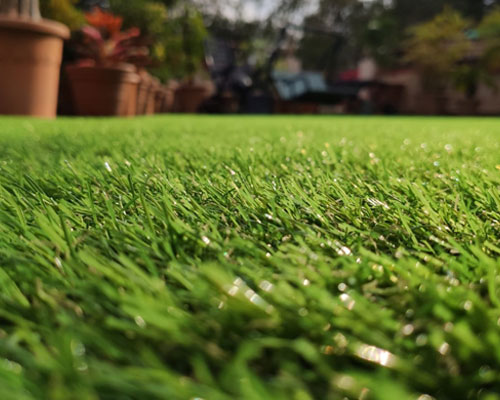Artificial Grass
Artificial Grass
As Real As Natural Grass
Looks like real grass
Artificial grass, also known as synthetic turf or fake grass, is a type of surface made from synthetic materials designed to mimic the appearance and feel of natural grass. It is commonly used in sports fields, residential landscaping, and commercial applications such as in public parks or office complexes.
Artificial grass is typically made from a combination of synthetic fibers, such as nylon or polyethylene, and a backing material made from a variety of materials, including latex or polyurethane. The synthetic fibers are designed to be soft and durable, while the backing material provides stability and support.
One of the main benefits of artificial grass is that it requires very little maintenance compared to natural grass. It doesn't need to be watered, mowed, or fertilized, and it stays green year-round, making it an ideal solution for areas with water shortages or extreme weather conditions.

However, there are also some concerns about the environmental impact of artificial grass. It is typically made from non-biodegradable materials, and it can get hot in direct sunlight, which can be uncomfortable for people and pets. Additionally, some studies have suggested that certain types of artificial turf may contain harmful chemicals
Overall, artificial grass can be a convenient and attractive option for landscaping and sports fields, but it's important to weigh the benefits and drawbacks before making a decision.





